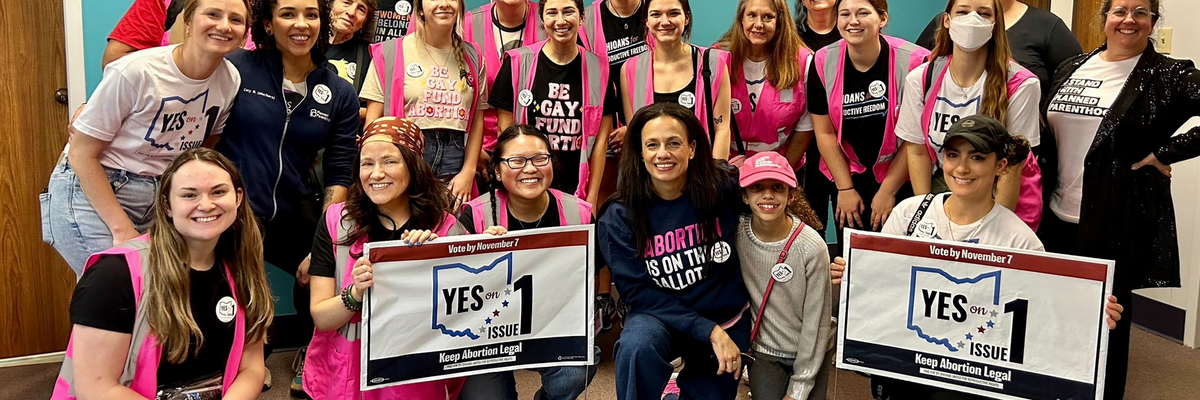Reproductive rights advocates in Ohio and across the U.S. are intensifying efforts to ensure voters in the Midwestern state approve a ballot measure on November 7 that would enshrine the right to abortion care in the Ohio Constitution—making a final push with canvassing and phone banking campaigns as they combat misinformation from pro-forced pregnancy Republicans.
Issue 1 will ask voters whether the state constitution should be amended to affirm that Ohioans have the right to "carry out one's own reproductive decisions," including abortion.
Abortion care is currently legal in Ohio up to 22 weeks of pregnancy as the right-wing state Supreme Court deliberates over a six-week abortion ban that was passed by Republicans and then put on hold.
Advocates have warned that failing to amend the constitution will leave Ohioans without "the freedom to decide what it best for [their] own families," with Ohioans United for Reproductive Rights (OURR) featuring in one ad a woman who needed an abortion after getting pregnant in an abusive relationship.
The Ohio secretary of state's office reported earlier this week that more than 200,000 voters had cast their ballots early in person and about 110,000 people had sent in absentee ballots by October 24, representing an even higher early voter turnout than the state saw ahead of an August special election.
That election, which progressive news outlet Heartland Signal said was likely "supercharging pro-choice voters" as Ohioans flocked to the polls to vote early, asked voters whether the state should require a 60% threshold on referendums regarding amendments to the state constitution, rather than a simple majority. The initiative, backed by Republicans who oppose abortion rights, failed by a vote of 43% to 57%.
Led by Republican Secretary of State Frank LaRose, forced pregnancy advocates have managed to change the language of the question appearing on ballots in the November 7 general election, using the word "unborn child" instead of the originally proposed "fetus" and saying the amendment would, as the ACLU of Ohio explained in September, "'always allow' abortion care 'at any stage of pregnancy, regardless of viability,' if the treating physician finds it necessary to protect health."
"Not only is this phrasing confusing and inflammatory, but it also suggests that the physician could override the pregnant patient's wishes," said Sheila Smith, communications strategist at the ACLU of Ohio. "This is absolutely false."
The amendment would allow the state to ban abortion care after about 23 weeks of pregnancy unless it "is necessary to protect the pregnant patient's life or health," but that language does not appear in the certified language on Ohioans' ballots.
State Attorney General Dave Yost has also falsely claimed the proposed amendment would invalidate parental consent laws for minors seeking abortion care.
Republican leaders in the state "know they can't win a fair fight, so they're trying to rig the game," said former U.S. Labor Secretary Robert Reich.
A poll by the Institute for Civics and Public Policy at Ohio Northern University last week found that 52% of Ohio voters still support Issue 1 based on the certified language that will appear on ballots, while 68% supported the proposed amendment as advocates initially phrased it.
In addition to working to ensure voters know that Issue 1 will be appearing on ballots, groups including Innovation Ohio are working to educate Ohioans on the facts about the referendum and Republicans' false claims.
State Senate Minority Leader Nickie Antonio (D-23) toldThe Hill on Wednesday that the ballot initiative may represent "a real turning point in terms of whether or not young people especially even see Ohio as a state they want to live in," as states like California and New York work to make abortion more accessible.
"And I do believe that the outcome of this election and of this ballot measure is gonna send a message to young people on whether or not there's a future for them here in Ohio," said Antonio.
